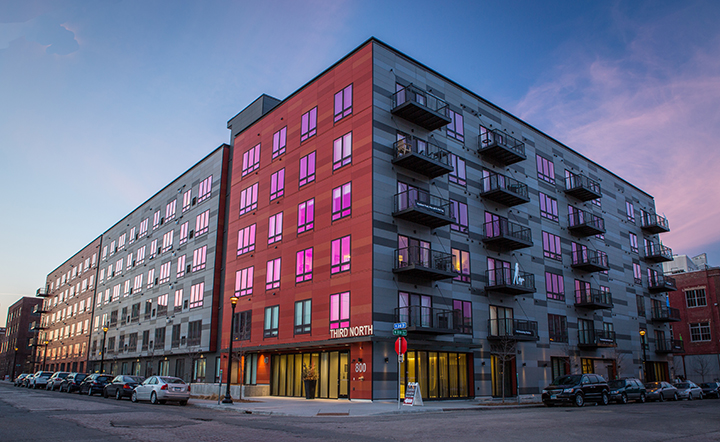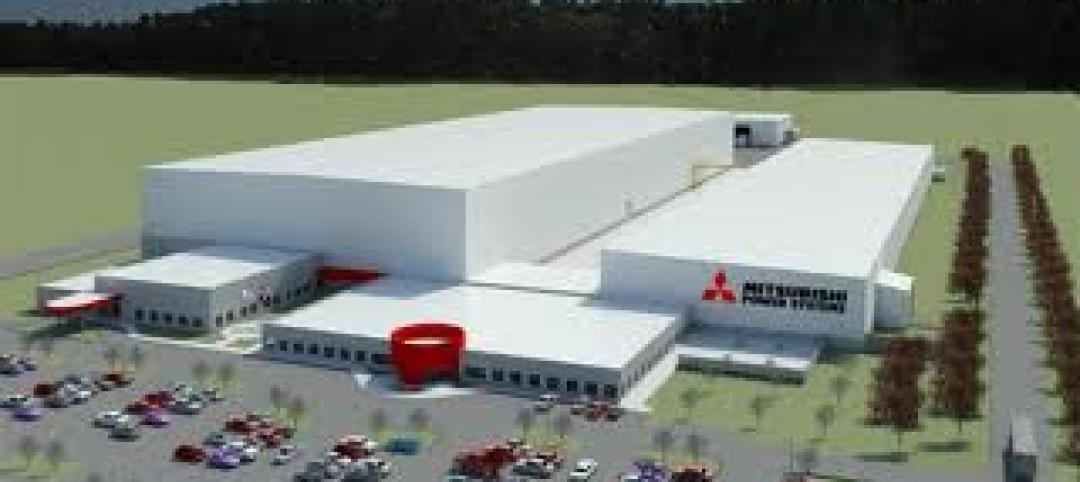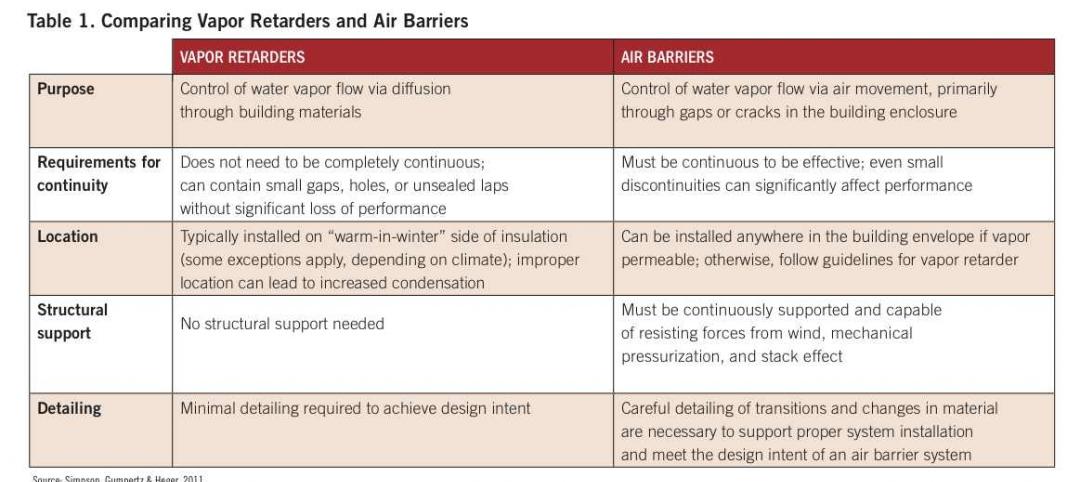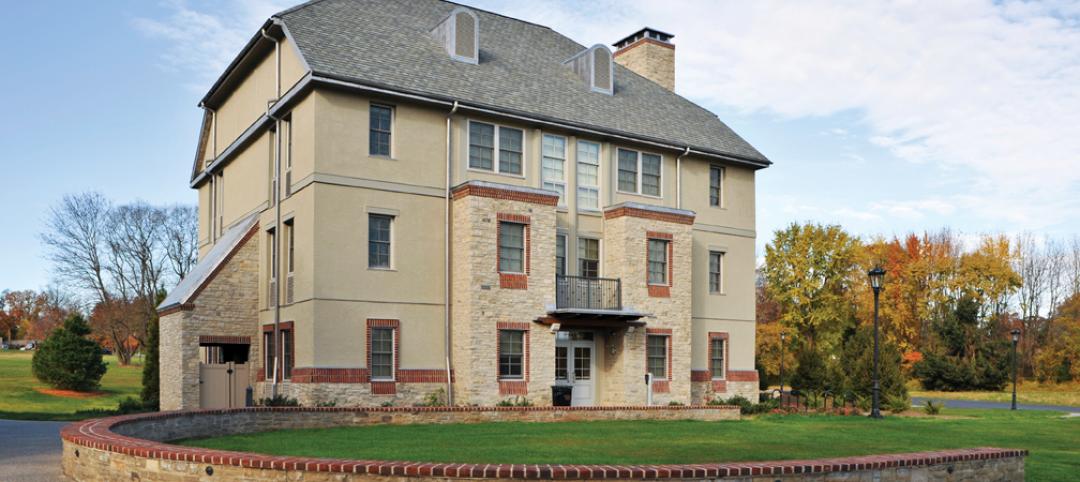Minneapolis’ North Loop neighborhood, like many close-in urban environments, is a community in transition. Over the past decade, property owners and developers have gradually blended and adapted historic buildings and warehouses with new residential blocks and modern amenities.
Respecting those existing aesthetics while addressing the wishes and needs of a younger generation were key goals for the developers of Third North, a 204-unit apartment complex completed in December 2013. The resulting six-story building manages to pay homage to existing structures without feeling dated.
A warehouse-like massing and the structure’s position abutting the sidewalk on three sides reflect the frontage of nearby warehouses, many of which have been adapted into office space or condos. The building’s U shape conceals residential features, including green space, a dog run, and pool—in the center and rear.
CHALLENGE
Create a modern-feeling façade without contrasting too much with the surrounding neighborhood.SOLUTION
Nichiha’s Illumination series in a blend of six colors offers a shape and pattern reminiscent of nearby historic brick buildings and warehouses.RESULT
Third North complements the varying elevations and façades of the neighborhood while bringing a fresh look to the streetscape.
Cladding selection also played a key role. The designers specified Nichiha’s 18”-by-6’ Illumination Series architectural wall panels in a blend of six colors—divided into swaths of reds and swaths of grays—that combine with a rectilinear shape to complementnearby brick. Simultaneously, the panels’ large, smooth scale and nod to metal help the overall look tilt toward the contemporary.
“The panels have rectangular dimensions, and we have shades of red and gray,” says Maureen Michalski, senior project manager for Schafer Richardson, developer of Third North. “It mirrors the colors of the brick and concrete on nearby historic buildings, but is a fresh, modern take off of it. The use of stacked bond also helps in this regard.”
Moving forward with the material wasn’t completely straightforward, however, prior to the Third North project, the city of Minneapolis didn’t allow fiber cement to cover more than 30% of a building’s façade. The architects submitted for an exception, and Illumination Series’ commercial look, aided by its hidden fastening system and the performance brought by an integrated rainscreen that creates an airspace to allow water to drain away, helped it receive an allowance. In the end, the city and the community were equally pleased with the finished product, potentially paving the way for similar applications in the future.
Along with its eye-catching aesthetics, the market-rate apartments offer a host of interior and exterior features attractive to the young renters flocking to the walkable, transit-oriented North Loop. In keeping with the active mindset that proliferates Minneapolis, the complex includes extensive fitness facilities along with the pool and outdoor green space, as well as a bicycle maintenance room for two-wheeled commuters.
In addition to the outdoor off-leash area, a dog grooming room caters to resident pet owners. A rentable guest suite, a club room, and outdoor seating round out the extensive list of communal comforts.
The units themselves boast open floor plans and feature stainless steel Energy Star appliances and efficient lighting, with several finish level options from which to choose.
With its lengthy list of amenities, an ideal location, and eye-catching aesthetics, Third North has been a welcome addition to the neighborhood—one that’s likely to fill up fast.
For more information about Illumination Series and other Nichiha products, please visit: www.nichiha.com.
Related Stories
| Oct 3, 2011
Balance bunker and Phase III projects breaks ground at Mitsubishi Plant in Georgia
The facility, a modification of similar facilities used by Mitsubishi Heavy Industries, Inc. (MHI) in Japan, was designed by a joint design team of engineers and architects from The Austin Company of Cleveland, Ohio, MPSA and MHI.
| Sep 12, 2011
Living Buildings: Are AEC Firms up to the Challenge?
Modular Architecture > You’ve done a LEED Gold or two, maybe even a LEED Platinum. But are you and your firm ready to take on the Living Building Challenge? Think twice before you say yes.
| Jul 22, 2011
Air barrier systems: Your guide to optimal performance
Expert advice on how to control wasteful air leakage in the building envelope.
| Jul 22, 2011
Five award-winning modular innovations
The Modular Building Institute's 2011 Awards of Distinction highlight fresh ideas in manufactured construction projects.
| Oct 13, 2010
Community college plans new campus building
Construction is moving along on Hudson County Community College’s North Hudson Campus Center in Union City, N.J. The seven-story, 92,000-sf building will be the first higher education facility in the city.
| Aug 11, 2010
Morphosis builds 'floating' house for Brad Pitt's Make It Right New Orleans foundation
Morphosis Architects, under the direction of renowned architect and UCLA professor Thom Mayne, has completed the first floating house permitted in the U.S. for Brad Pitt’s Make It Right Foundation in New Orleans.The FLOAT House is a new model for flood-safe, affordable, and sustainable housing that is designed to float securely with rising water levels.













